It’s about time juniper berries got the attention they deserve.
These common plants grow all over the Northern Hemisphere and the berries not only feed wildlife, but humans can use them herbally, in the home, and in the kitchen as well.
Wherever junipers grow, humans have been using them for food and to treat various health issues. The cones were so valued that species not native to Egypt were buried in King Tutankhamun’s tomb.
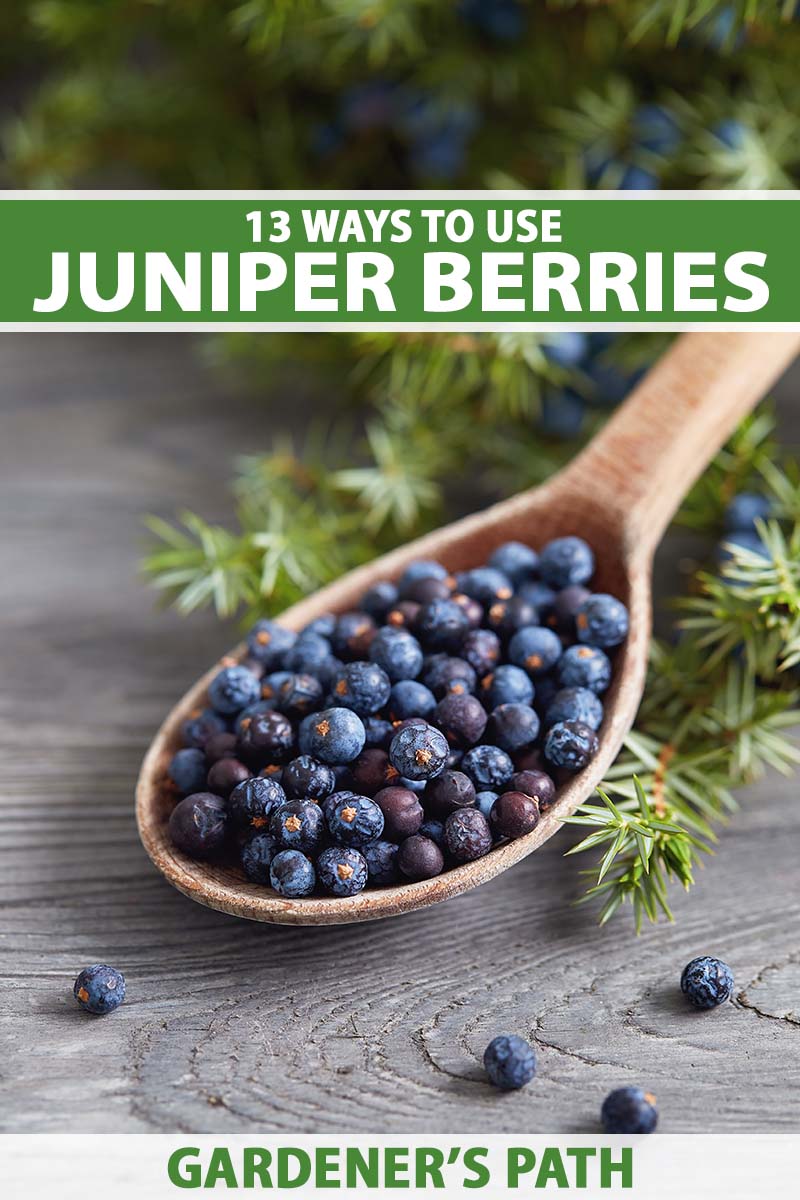
We link to vendors to help you find relevant products. If you buy from one of our links, we may earn a commission.
Today, they can be used to flavor everything from desserts and meat to, of course, gin. If you’re looking for some ideas to use up the fruits, here’s what we’ll tackle coming in this article:
How to Use Juniper Berries at Home
Before we jump in, note that these so-called berries aren’t botanically berries at all. They’re modified cones that carry the reproductive seed inside. We’ll use the terms interchangeably here.
You can use them fresh or dried in all of the recipes described below, unless specified. Dried cones are milder, while fresh ones are more pungent.
1. Herbal Uses
The list of herbal uses for juniper cones is pretty long, both historically and in modern times. Some of these have been confirmed through scientific research, while others haven’t been proven… at least not yet.
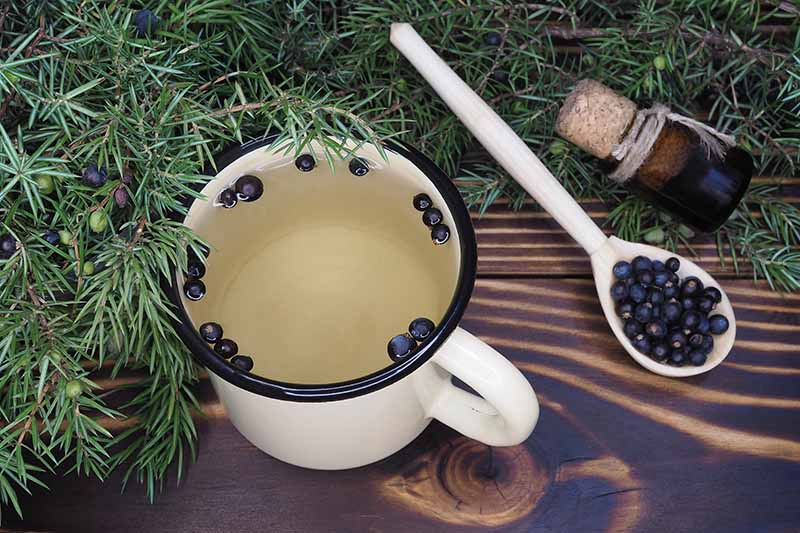
This includes potential health benefits like regulating blood sugar, preventing pregnancy, easing insomnia, aiding digestion, treating kidney issues, and use as an antibacterial and antifungal agent.
For more information on using other parts of these plants herbally, head on over to our comprehensive guide.
2. Home Goods
Alongside medicinal and edible use, juniper is handy outside of the kitchen and medicine cabinet as well.
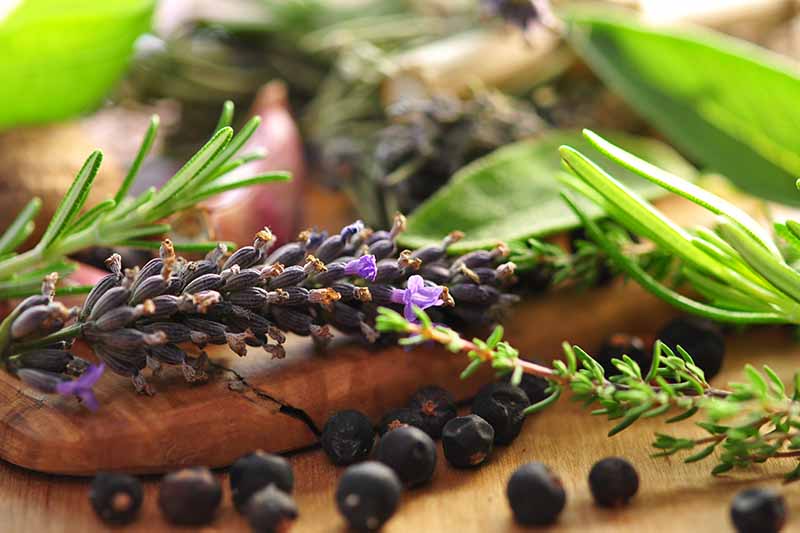
Here are a few ideas to get you started:
Combine dried berries with lavender, pine needles, or rosemary and put the mix in a muslin bag. The sachets can be used in a drawer or the closet to scent clothing. Who knows, maybe it will keep bugs away, too.
If you’re into making candles, you can also try adding the berries to your wax mixture.
3. Beer
Juniper cones (along with spruce tips, fir tips, juniper needles, and pine needles) can be used to make beer and cider.
Brewing beer is beyond the scope of this guide, but the basic process involves infusing the fruits in hot water before you filter out the solid parts.
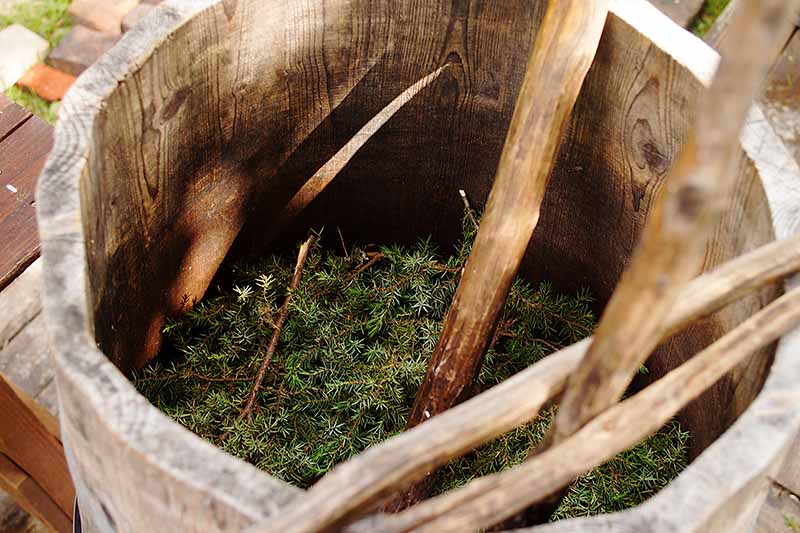
You then add the infusion to the wort. If desired, you can add more berries (or other flavorings) to the liquid for all or part of the fermenting process.
You must use wild harvested juniper for this purpose, since you need the yeast that covers the berries. Commercial berries are often washed before being shipped and they lack the yeasty powder.
Some older, dried berries may lack the yeast as well.
4. Cakes and Cookies
Juniper might not come to mind right off the bat when you’re thinking about flavoring your desserts. But it can be exceptionally delicious in cakes and cookies.
Think gingerbread, hazelnut, or oat cookies with some of the pungent cones mixed into the batter. Or maybe just try good old sugar cookies with a cone-spiced frosting.
A lime, lemon, orange, chocolate, or vanilla cake with the dried or fresh berries mixed into the batter and/or frosting is also delicious.

While I was writing this guide, I had a hankering for juniper cake, so I made a ginger and juniper batter, topped with a buddha hand lemon and juniper frosting. Delicious!
If you don’t have a good frosting recipe, consider this one for vegan vanilla frosting from our sister site, Foodal. Just add 1/8 of a teaspoon of dried, ground cones (or more to taste) when you mix the ingredients.
5. Chilis and Stews
Juniper, tomatoes, and chilis are good friends. If you have a favorite chili recipe, try adding some ground berries to taste for a subtle addition that will wow your dinner guests.
Looking for a recipe? Foodal has you covered with their take on chili con carne.
The flavor is also lovely in lamb or beef stew.
6. Fruit Spreads
Whether you prefer preserves, jams, jellies, or chutneys, juniper makes a nice addition. But note that I said addition.
Juniper alone makes for a pretty intense jelly or jam. It works best when you mix it with a fruit like orange or rhubarb, and it complements citrus-y fruits, in particular.
But really, anything from cherry to blueberry to apple can also work.
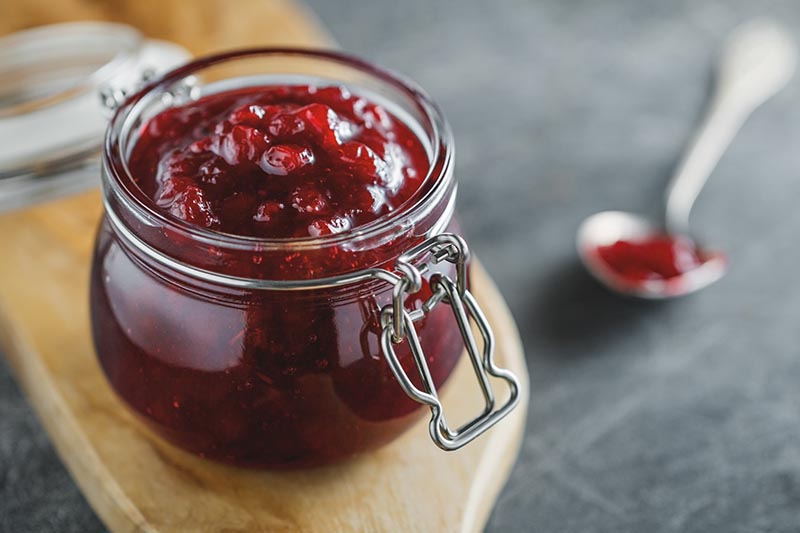
Use your favorite fruit spread recipe and add some freshly ground cones. You want to add about three-quarters of a teaspoon for each cup of fruit that you use.
I love to finely chop the fresh berries, mix them with cooked rhubarb, and sprinkle the mixture on top of yogurt.
7. Gin
Want to cheat a little? You don’t have to go the authentic route of distilling grain alcohol with your aromatics. Instead, grab a fifth of vodka and add three tablespoons of berries, along with your other preferred aromatics.
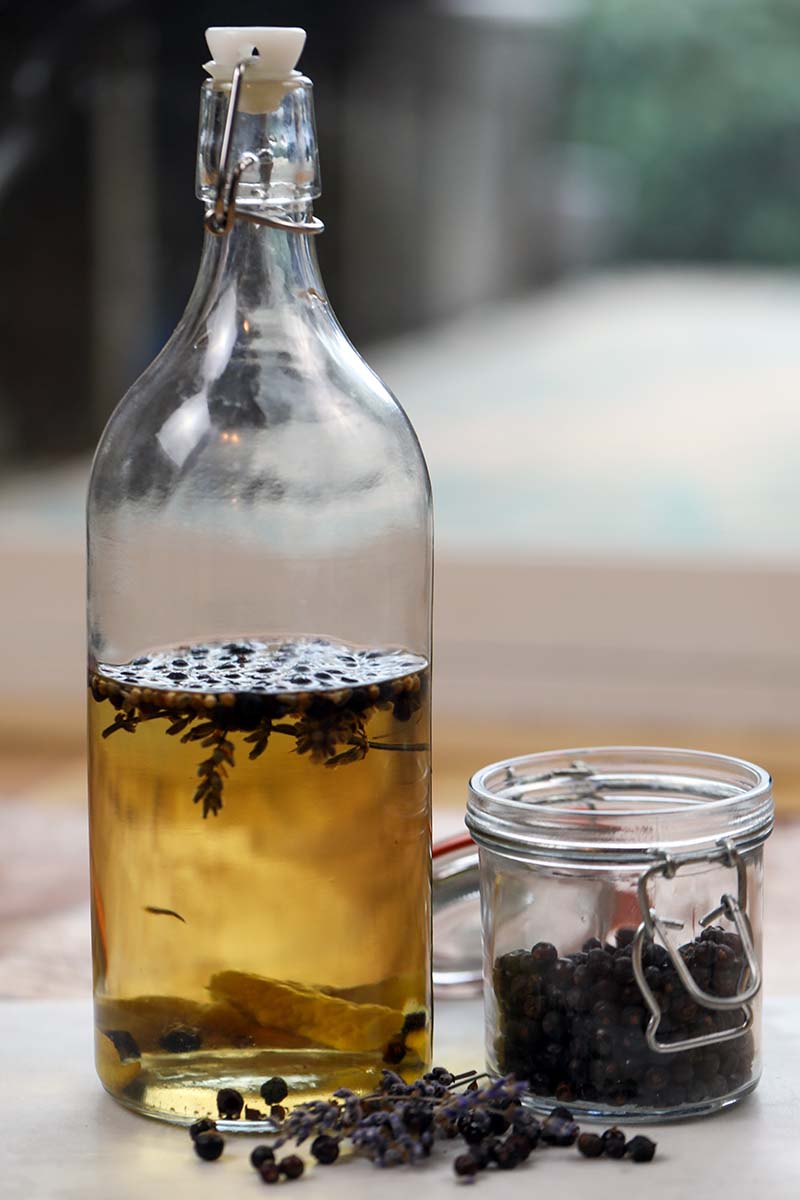
These might be lavender, coriander, allspice, cardamom, chamomile, citrus peel, rose petals, and/or peppercorns.
Juniper should make up the bulk of the flavor, so if you add other aromatics, they should collectively comprise the same quantity or less than the amount of berries that you use.
Incidentally, gin is usually made using immature berries. You, on the other hand, should always use ripe, fully mature cones for this method.
8. Gravlax
Cured salmon is a staple in cuisines from across the globe, from Nordic countries to Native American diets.
While you can cure salmon with nothing more than salt, the addition of ground berries and peppercorns make this delicious treat even more exceptional.
9. Meat Seasoning
The intense flavors of juniper blend well with meat, especially wild or gamey meats like duck, lamb, bison, and venison.

The dried berries can be used as part of a rub or seasoning mix, or fresh and chopped into fine bits. If you’re using fresh, they are best either sprinkled lightly onto the meat after cooking, or as part of a marinade.
When using dried fruits, you have the option of using a grinder to make juniper dust, or you can chop or mash them with a mortar and pestle.
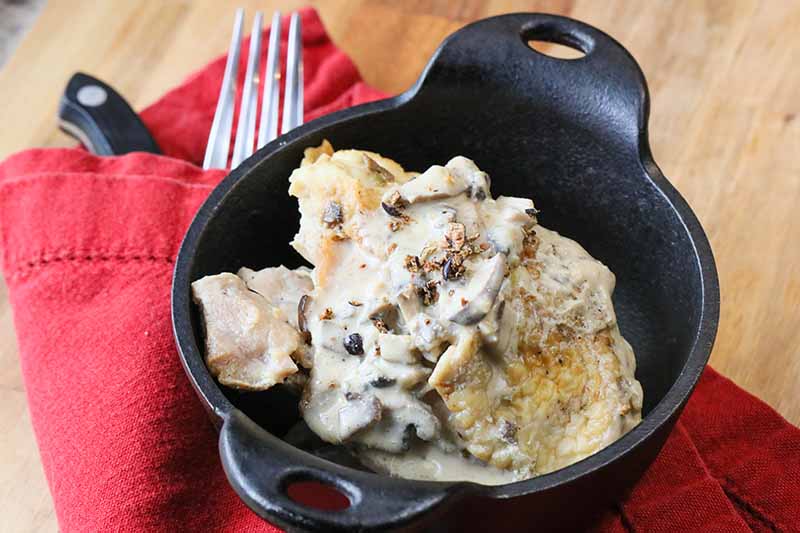
While you can use the berries alone to make a rub, the resulting flavor will be more complex if you also add some peppercorns, salt, garlic, and perhaps some crushed red pepper, tarragon, oregano, or sage.
As a marinade, use the same spices, plus some chopped shallots, red wine, a few bay leaves, and olive oil.
10. Smreka
If you’ve never had smreka before, add it to your list.
Popular in the Balkan region, this fermented drink combines the cones with lemon and water, and it can be made bubbly with the addition of sugar or honey, which act as food for the yeast on the skin of the cones.
To make a batch, combine two cups of cones with one lemon that’s been cut into quarters in a pitcher or large glass jar. Add two quarts of water and cover with cheesecloth or a cotton towel, but don’t seal the jar with a lid.
Place in a sunny window to ferment. Agitate the mixture daily. After two weeks, you should be good to go. Strain and refrigerate.
You can add a little water or sugar to taste. If you want to try a little natural carbonation, add two tablespoons of sugar to the ferment about halfway through.
11. Sourdough Starter
Don’t worry, this sourdough starter doesn’t taste like juniper. The berries are covered in a powdery bloom that is actually wild yeast. And you can harness the power of this yeast to make a sourdough starter and other fermented products.
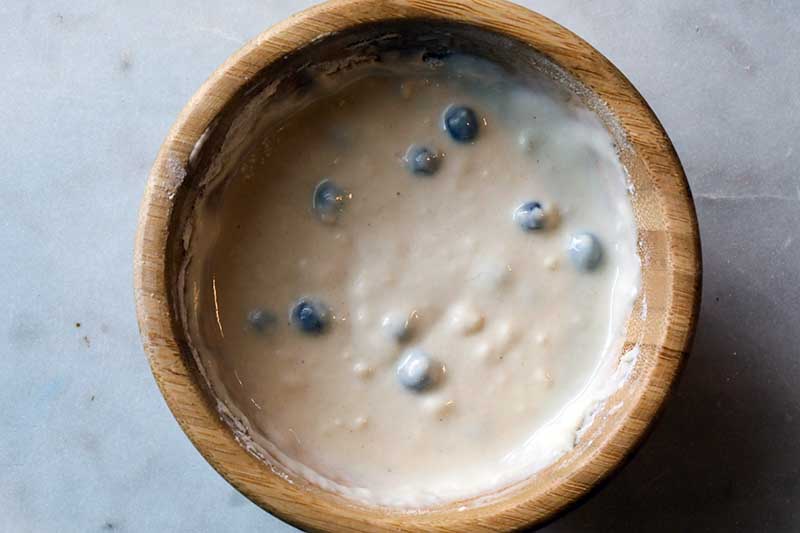
You’ll need to harvest the fruits yourself if you’d like to do this. Commercial berries have usually been washed and/or dried, and this removes that yeasty powder.
For every other use described here besides making beer, it doesn’t matter whether you use wild harvested or commercial berries, but the yeast is what we’re after to make a fermented starter.
To do this, mix one cup of water with one cup of bread flour. While you can use treated municipal water, you might have better success with distilled water. Then, add a dozen freshly harvested berries and mix everything until it has a smooth consistency.
If you want to hurry the process along, you can place the mixture in a warm spot, but not in direct sun.
A starter that’s placed in a cool area will just take a little longer to get going. Don’t place the mixture in the refrigerator, because it’s too cool for the yeast to be active.
After a few days, dump out half of the mixture, retaining the fruits. Replace the stuff you removed with equal parts water and flour. If any of the cones crack or open, discard them.
For the next few days, keep removing half of the starter and replacing it with fresh water and flour. After a week or two, you should have a bubbly, happy mixture going. Remove the berries. Now you can care for it as you would any other starter.
Read more about making sourdough at home on Foodal.
12. Tea
Whether you just love the flavor or you want to make a medicinal tea, the berries (and young needles) can be used for both purposes.
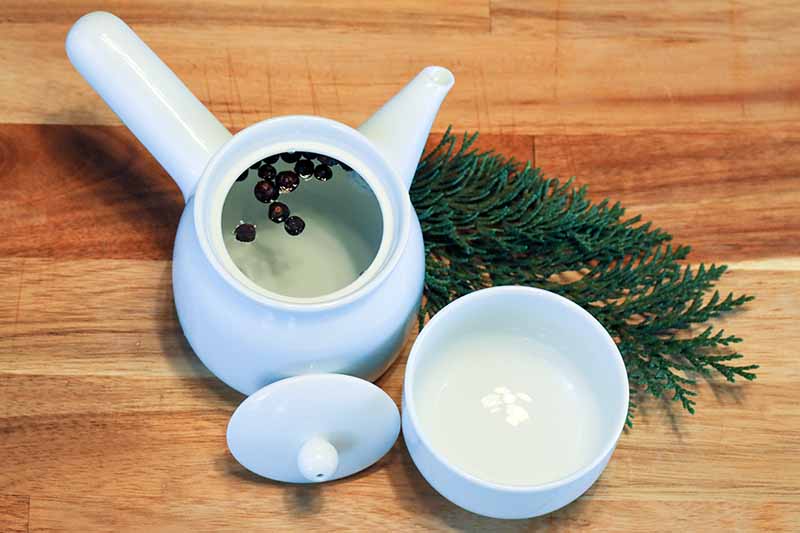
Either way, use a heaping teaspoon of the fruits for every cup of water. If you’re using fresh, you can mash them up a little for an even stronger flavor.
Simmer the berries in the water for 20 minutes and then strain. Add a little honey or lemon if you prefer the flavor that way.
13. Veggie Seasoning
Juniper is a classic ingredient in sauerkraut and red cabbage recipes from Scandinavia, Germany, and Austria.
Making it traditionally involves combining shredded cabbage, water, and salt with fresh, mashed juniper berries, caraway seeds, and mustard seeds.
Choucroute garnie is a classic Alsatian dish that combines sauerkraut with sausage and potatoes.
Braised red cabbage is a well-loved holiday treat known as rotkohl in Germany, kokt rödkål in Sweden, and rødkål in Denmark and Norway. It generally involves combining shredded cabbage, vinegar, onions, water, apples, cloves, and juniper fruits.
They’re also tasty ground and tossed with some butter and chopped potatoes before roasting in the oven at 400°F.
Juniper Berries Aren’t Just for Gin
Juniper berries are good for so much more than flavoring gin. If you’ve never had juniper gravlax or raspberry jam before, you’re in for a treat.
And if you live in an area where these hardy evergreens grow, you have a flavor bonanza just waiting outside your door.
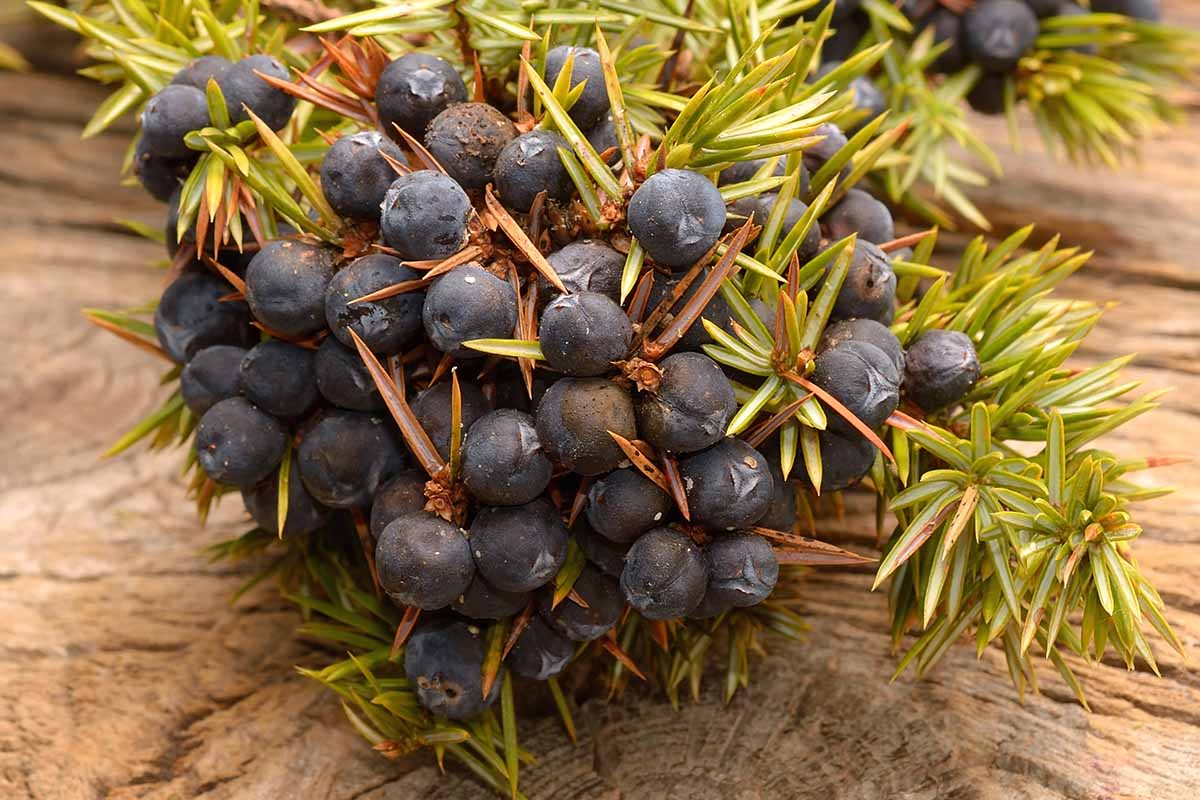
I can’t wait to hear how you use up your harvest. Let us know in the comments section below!
If you can’t wait to learn more about these marvelous plants, you might be interested in checking out one or more of our other guides to the Juniperus genus, starting with these:
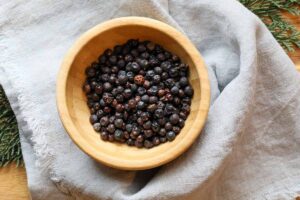


Wow! I had never known there’s so many uses for these berries. I thought they were just for the birds! ;- )